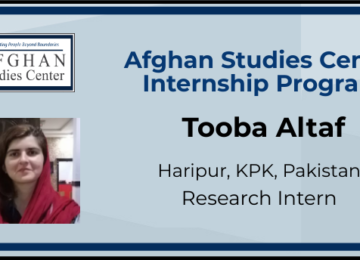Prime Minster of Pakistan visited Afghanistan recently to improve bilateral relations. Pak-Afghan relations have seen many ups and downs but since inception remain short of being cordial. In 1747, Ahmad Shah Abdali’s vision tied the Pashtun tribes of Hindukush into a state and Afghanistan emerged as symbol of Pashtun Unity. Successive Afghan rulers extended their rule towards north and west. In late nineteenth century British helped demarcate borders of modern Afghanistan and Durand Line emerged as de facto British India-Afghanistan border.
Twentieth century Afghan rulers disapproved the Durand Line, considering it against the very spirit of Pashtun tribal unity. In 1947, Afghan Government cast a lone vote opposing Pakistan’s admission to the United Nations and threatened to raise the question of Pukhtunistan in United Nations General Assembly thus disrespected the referendum-based decision of NWFP to join Pakistan. Kabul established diplomatic relations with India in December 1947 whereas delayed the same with Pakistan till February 1948 thus making their point that henceforth, India was to be their ally of choice, not Pakistan. Internal political instability of the seventies helped Soviet invasion and subsequent occupation of Afghanistan in 1979.
In September 1947, viewing victorious Soviet advance in Central Asia, Quaid-i-Azam declared “The safety of the North-West Frontier is the world concern and not merely an internal matter for Pakistan alone”. Following Truman Doctrine, US-Pakistan era of defense and economic cooperation started in 50s that helped pave way for a broad-based coalition against Soviet occupation of Afghanistan. Local Afghan resistance to occupation was built around Jihad against Infidels instead of Afghan nationalism that saw emergence and convergence of international jihadists like Abdullah Yousaf Azzam, Osama Bin Laden and Ayman al Zawahiri armed with extremist sectarian thoughts. Soviet departure in 1989 and US occupation in 2001 both helped widen the ethnic and sectarian divide in Afghanistan. It seems no one had learnt any lesson from history.
Mughal King Akbar faced a religious rebellion in Hindukush region when Roshaniya Movement was instituted by one Bayazid Ansari, an immigrant from Medina in 1542-3 AD. It spread like wild fire among the Pashtun tribes of Hindukush. Bayazid declarations brought him into conflict with Moghul Emperor Akbar the Great. The expedition by King Akbar against Bayazid followers could not crush the religious rebellion completely. It was finally crushed by a counter ideology, that of orthodox Sunnism spearheaded by an Afghan Saint Akhund Darweza. Sixteenth century Safavid Empire helped spread Shia Islam in present day central and northern Afghanistan. During Afghan Jihad and beyond, extremism brought by international jihadists in the shape of Salafi and Takfiri school of thought further sharpened ethnic and sectarian divide between Northern and Southern halves of Afghanistan. US presence in Afghanistan is further widening the ethno-sectarian divide between Afghan Taliban and Northern Alliance.
There is a race amongst Afghanistan’s neighbors to increase bilateral trade, develop its infrastructure, explore its mineral resources and use its soil for laying oil pipelines and electricity grid. Initiatives like China’s Mes Aynak copper mining project, US New Silk Road Project which includes CASA and TAPI, India’s INSTC related road network, Iran’s rail road projects in Herat and Pakistan’s development of extensive road network for improvement of bilateral trade through Chaman, Angoor Ada and Torkham crossings suffers from delays due to security concerns and internal political instability. Former US NSA, Bruce Riedel opines in his book “Avoiding Armageddon” that “This is the beginning of a new “Great Game” to be fought between Islamabad and New Delhi in Afghanistan”. Power struggle in Afghanistan has divided it in northern and southern halves on ethno-sectarian grounds. Offices of Afghan President and CEO vindicate the assertion. In early nineties Defunct Yugoslavia was divided on ehtno-religion lines after genocide of Bosnian Muslims in the hands of orthodox Christian Serbs. Since then there is a relative calm in that part of southern Europe. Similarly, Sudan was divided between northern Muslims majority areas and Christian strong hold of Southern Sudan. The artificial unity amongst various ethnicities in Afghanistan like tribal Pashtuns, Hazaras, Tajiks and Uzbeks in presence of widening sectarian divide is prime cause of instability. The North-South divide got more prominent when Northern Alliance uprooted Taliban form Kabul in 2001 with US support. Is Balkanisation of Afghanistan into northern and southern sovereign states is emerging as an option for lasting peace?
There is no military solution to the ongoing fighting in Afghanistan. Dialogue with the warring factions on dividing the territory and self-rule for various ethnicities that choose to live together may end miseries for Afghan people and help repatriate millions of Afghan refugees now sheltered in Pakistan. Such arrangements will help promote its wider economic integration in the region. This will also facilitate respective govts to control alien ideologies, promote sectarian harmony, reduce warlordism, ensure good governance, establish rule of law and pave the way for functional democracies to rise.
This article originally appeared in Pakistan Observer on April 20, 2018. Original link.
Disclaimer: Views expressed on this blog are not necessarily endorsed or supported by the Center for Research and Security Studies, Islamabad.








